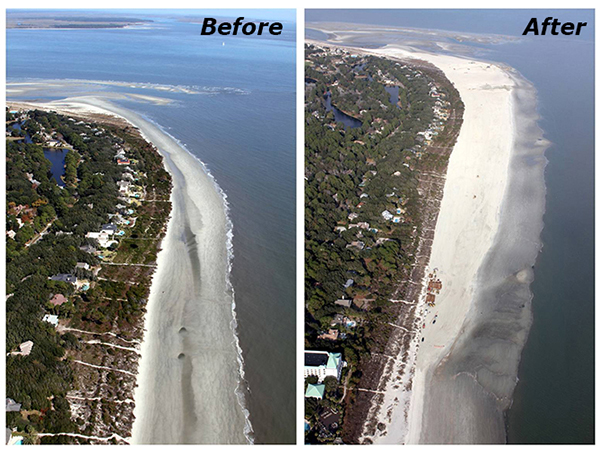Beach Nourishment: Pros and Cons
- Tenzin Choezom
- Jul 15, 2021
- 2 min read
Updated: Jul 15, 2021
Beach nourishment, also called beach replenishment, is the process of pumping or trucking sand from sources like the ocean floor or other inland locations, and directly adding it to the beach shores.
"In a typical beach nourishment project, sand is collected from an offshore location by a dredge and is piped onto the beach. A slurry of sand and water exits the pipe on the beach and once the water drains away, only sand is left behind" - Florida Department of Environmental Protection
As sea levels rise and we face more severe weather near coastal regions, and our beaches are suffering from erosion. They undergo drastic reductions in the amount of sand on beach shores. Severe erosion causes flooding, building loss, and road damage. As a result, by adding more sand to the beaches, the beach width and height increase. Healthy beach systems have a range of benefits:
Protects coastal structures from storms- the sand acts as a buffer between the storm waves and the areas inland
Absorbs the energy from waves- the waves break farther from the shoreline, gradually decreasing in energy
Combats flooding and erosion.
Provides for new recreational activities
Can possibly create new habitats
Furthermore, in comparison to alternatives, namely "hard armoring" techniques, beach nourishment is a "soft armoring" technique because it avoids hard and heavy structures like sea walls.
Beach nourishment has been used in the United States since the 1920s and in Europe since the early 1950s. It is also quite common in the Netherlands, Germany, Spain, France, Italy, the UK, and Denmark.
However, it would be foolish to deny that there are numerous negative consequences of beach nourishment.
The incredibly large amounts of sand that are suddenly displaced can kill many smaller animals living on the beach shores
During the process of nourishment, there are many heavy equipment and machines needed, many of which threaten the wildlife
The difference in the chemical and physical composition of the habitat can be altered if the new sand or sediment does not match the original ones
The exact recovery time needed after a nourishment procedure is undetermined as of now and only stretches the more the beach gets renourished
The sites from where the new sediments are taken may eventually also become depleted
It is thus evident that beach nourishment is most definitely not a long-term solution to the erosion and degradation of our beaches; which are important habitats, as well as cultural and recreational sites. The waves will continue to erode the sand, moving it elsewhere and dirtying the regional waters and the beach will yet again have to be renourished. Regardless, it has saved many habitats and will continue to do so for the time being.
Sources
https://floridadep.gov/rcp/beaches-funding-program/content/why-beach-restoration https://explorebeaches.msi.ucsb.edu/beach-health/beach-nourishment https://www.iwr.usace.army.mil/Missions/Coasts/Tales-of-the-Coast/Corps-and-the-
Image Sources
https://www.dredgingtoday.com/2019/10/21/beach-nourishment-begins-at-hayling-island/ https://www.remiamibeach.com/citywide/beach-renourishment-underway/ https://portcitydaily.com/local-news/2019/07/09/army-corps-asks-brunswick-beach-towns-to













Comments